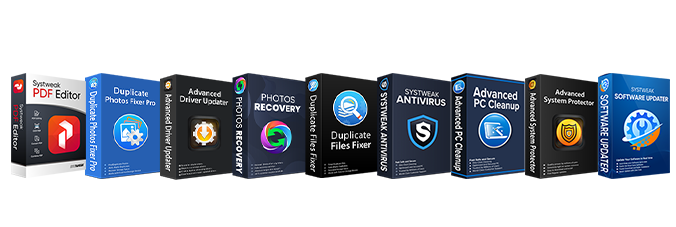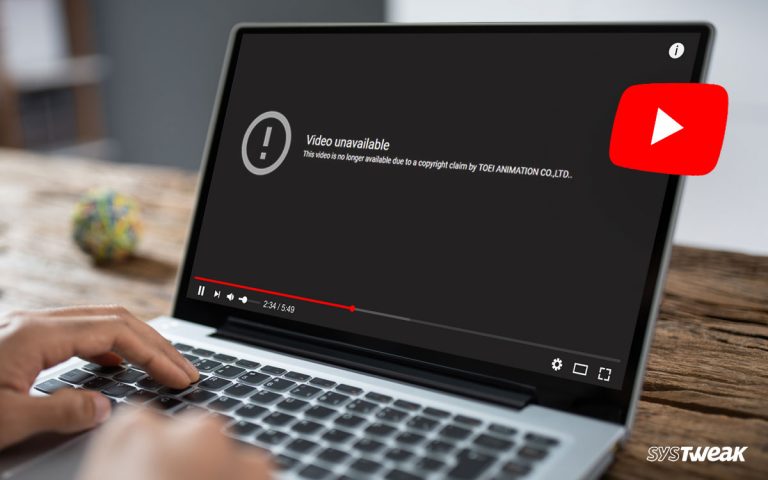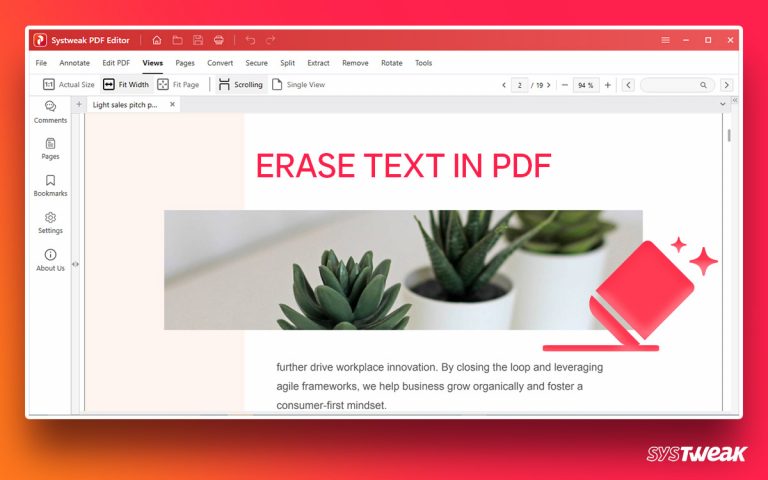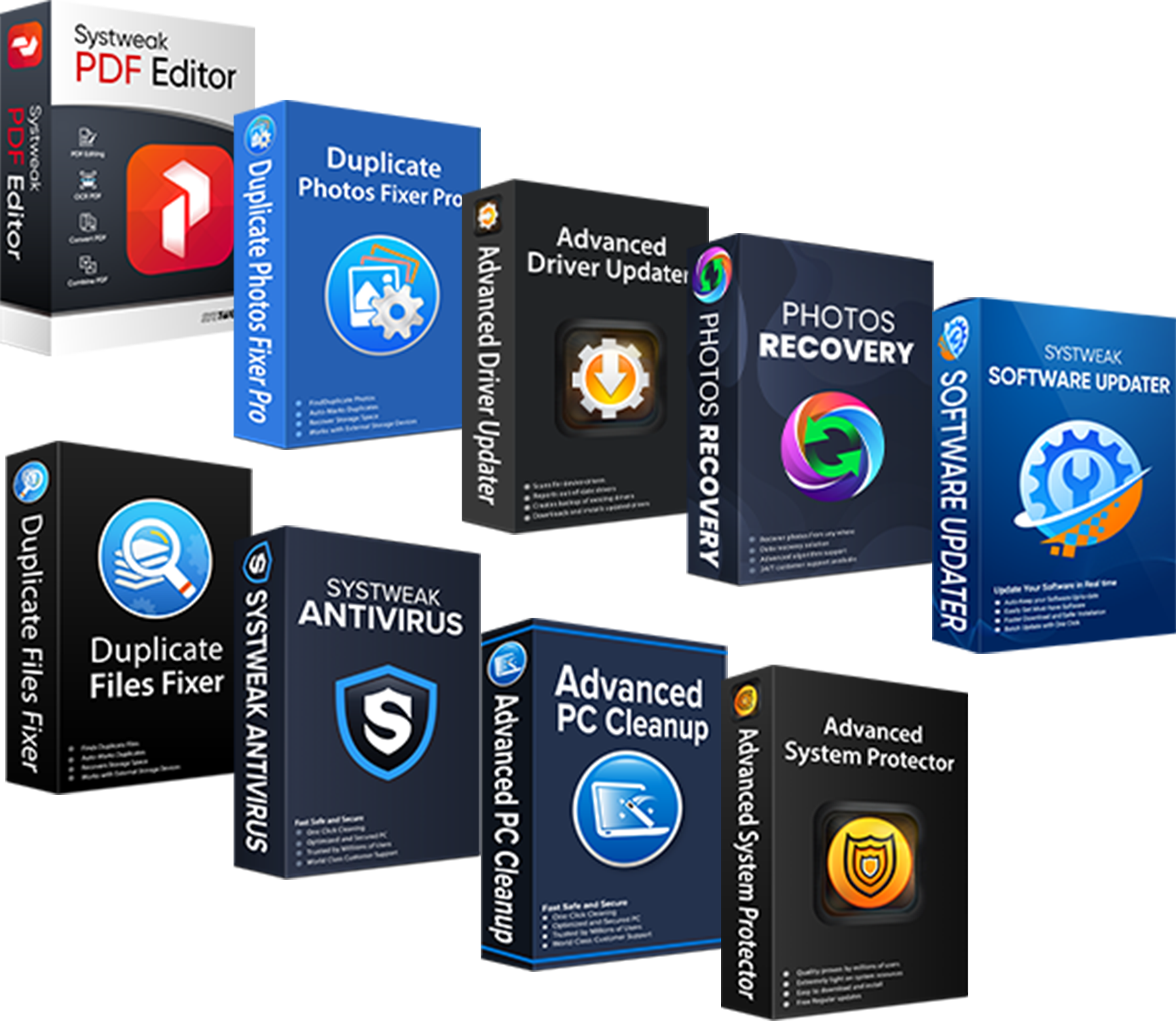Over time due to fragmentation in the file system, the PC begins to operate slowly. This decreases productivity and interferes with basic tasks.
50% OFF

BLACK FRIDAY OFFERS
Unlock Black Friday Mega Savings — Systweak Tools FLAT 50% OFF!
To troubleshoot this problem and speed up the PC performance defragmenting the disk in Windows is recommended.
Luckily, there’s Disk Optimizer offered by Advanced System Optimizer – the best and free PC cleaner to do it.
This help guide will explain all about Disk Optimizer and how to defragment a disk using it.
What is Hard Disk Fragmentation?
As we all know, Hard Disk Drive is a system storage device that stores data in encoded form. It is divided into different tracks, and each track is further divided into different sectors; it gets fragmented over time. The data written on this disk is read back using the head arm.
During data storage, the head arm moves through the surface of the hard disk and finds free space to store the complete information in the sequential or linear format.
The information is stored in contiguous space when appropriate free space is available. This means that when the data is read back, the head arm does not have to rotate too many times to locate the complete information.
But in the absence of a suitable volume of free space, the data is stored in bits and pieces on the hard disk. In such a scenario, while the information is read back, the head arm has to read the scattered information from various locations rotating more than once. This increases the data access time, consequently affecting speed and performance.
Read Also: Windows 11 Keeps Crashing? How To Fix It?
What Causes Disk Fragmentation?
Disk fragmentation occurs when the data is stored in a disorganized and unsystematic manner. This happens when there is a shortage of contiguous (continuous or linear) space to be allocated.
Due to this, the system takes more time to read the fragmented data back from the hard disk.
Fragmentation is caused basically because of: –
- Less free space
Whenever sufficient free space is unavailable to store the entire information, the storage is done in parts on the hard disk.
- Frequent deletions
Often the unwanted data is deleted from the hard disk. In this process, gaps are left in between fragmenting the hard disk.
- Extension of Files
Additions made to the already stored files may not be stored in the same sequence on the hard disk without enough space. Usually, in such a case, the system creates an extension of the file and stores it elsewhere.
- Moving of Data
There can be instances when data is moved to a new location, and there isn’t enough space to store the data in totality. The information is then stored in pieces on the hard disk.
Must Read: Best PC Cleaner Software for Windows
How To Defrag Disk Windows 10
The hard disk is in constant use as we store data and information. In addition, random deletions and uninstallations leave behind small chunks of free space.
These small areas of free space are spread out throughout the hard disk, and contiguous space is not available for storing new files.
In such a scenario, the system must store the data on available small chunks of free space. Due to this, the data read time increases, and the system becomes unresponsive.
Important : Fragmentation causes system slowdown, slow startups and shutdowns, low hard disk storage efficiency, and declining performance.
To help deal with this problem, Disk Optimizer is offered by Advanced System Optimizer. It helps remove all the fragments from the hard disk and puts small chunks of free space together.
This helps defrag the disk and create free space that can be used for more efficient and better storage purposes. The scattered data is also brought together so that it can be accessed faster from the area it has been stored sequentially.
Read Also: How to Remove Cookies in Chrome
In short, Disk Optimizer is created to defrag Windows 7, 10, and other versions of Windows operating systems.
How Do I Defrag My Computer?
To defragment disk on Windows 7, 8, 8.1, 10, and 11, follow the instructions given below:
- Launch Advanced System Optimizer
- Click Disk Cleaner & Optimizers > Disk Optimizer

This will open a new window simplified into 5 steps:

1). Welcome
2). Scan
3). Results
4). Optimizing
5). Finish
Step1: Welcome

On the Welcome screen, you will find a dropdown menu under the section “Select Hard Drive” from here, select the drive to initiate scanning.
Following this, click on “Start Scan Now” to start the scan on the selected drive.
Direct Defrag
You may also ‘check’ this option to skip the disk analysis and directly start the defragmentation process for the selected drive. This will take you to the fourth step (Optimizing) without showing you the scan results and defrag the selected disk.
Step2: Scan
The next step shows the scanning progress of the selected drive.
Each drive comprises several sectors, and each sector is analyzed extensively by the Disk Optimizer. The graph shows the actual status of the hard disk. You may refer to the legend under the graph for a better understanding.
Explanation of terms used in Legend:
- Free – Refers to the space on the hard disk, which stores no data and can be used for storage purposes. Disk Optimizer puts together all the scattered chunks of free space in one place on the disk.
- Allocated – Refers to the space pre-designated by the system to store important files. Disk Optimizer detects fragments in the allocated space and removes them.
- Defragmented – Refers to the data on the hard disk that is not scattered and is saved in one contiguous space.
- Fragmented – Refers to the data stored in various locations on a hard disk, i.e., fragmented. Disk Optimizer defragments the data for faster data access.
- MFT –Refers to the Master File Table in which the information of every file and directory is stored with its attributes. It is always good if the MFT is stored in the hard disk in a contiguous space. The search for any information or file will then be faster. Disk Optimizer defragments the scattered MFT.
- MFT Zone – Since contiguous MFT on hard disk improves responsiveness and performance. For this, the pre-allocated space for MFT is not used during regular storage, and the cluster of this space remains non-fragmented, referred to as the MFT Zone. When the hard disk space is consumed, the MFT Zone is taken. When the MFT is expanded, it also gets fragmented. This becomes a serious area of concern as there is a direct impact on data access time and system performance. Disk Optimizer identifies fragments in the MFT Zone and removes them.
- Directory – Refers to directories stored on hard disk space. The directory is where multiple files, folders, or information are stored. Disk Optimizer identifies the scattered portions of directories and brings them together.
- Pagefile – Refers to a part of a hard disk wherein data not recently been used in RAM is stored out there. A page file is read faster as it is a contiguous chunk of data. The user can set the page file size per the requirements. Disk Optimizer will defragment the fragmented page file for faster data access.
- Locked – Refers to those files, folders, and applications that are locked or made un-editable by the system to inhibit user interference. Some files currently in use cannot be included in defragmentation. Such files are also considered locked. Disk Optimizer will not be able to defragment the locked files.
To stop the scanning process, you may click on the “Stop” button any time during the process.
Step3: Results

Once the scanning is through, a scan summary is exhibited. Approximate figures for the volume of the hard disk found to be fragmented, several files found to be fragmented (non-optimized), and the current largest volume of contiguous space found on the hard disk are displayed. Also, you will be guided on whether defragging is needed or not.
Note : Defragging a hard disk is always recommended for better system performance.
On clicking on the “Detailed Report,” the disk scanning report can be viewed in detail. The report is web-based and can be viewed only when connected to the internet.

The data fragmented on the hard disk adversely affects the system’s performance, which should be taken care of on time. Clicking the “Defrag” button will defrag the data on disk and improve data access time.
On clicking on the “Cancel” button, you may move back to the Welcome screen and scan another drive for fragmentation.
Step4: Optimizing
Disk Optimizer starts the actual process of defragmentation by clicking on the “Defrag” button.
The small chunks of free space are put together during this process to create a larger chunk of free space for better and more efficient data storage.
Also, the scattered data is brought together and saved in one contiguous space on the disk. This process takes some time to complete.
The defragmentation process can be stopped anytime during the process by clicking on the “Stop Defrag” button in the lower right corner.
Step5: Finish
The last step shows the comparative analysis of the disk optimization process, i.e., disk fragmentation before and after optimization, data fragmented before and after optimization, and the largest volume of contiguous space available for storage before and after optimization.
To view the complete details of the defragmentation process, you may click on the “Display Report” button. This will open a web-based report showing all the minute details of the optimization.
To start the process of defragmentation for other drives, you may click on the “Finish” button and return to the Welcome screen.
Schedule Tab

Disk Optimization is regularly recommended. Scheduler facilitates scheduling the process of defragmentation for your hard disk. The scan starts automatically at the predefined day, date, and time. This is a helpful mechanism as we might skip this important task quite often.
You may set the scan time by using the various options given.
Options to schedule scan:
“Every Day” at a specified time
OR
“Run Once” on a specified date (can be set using the calendar dropdown) and time
OR
“Every Week” on specified days at a particular time (checkmark the days of the week for the automatic scan)
OR
“Do Not Schedule” scan (undo the scheduled scans)
Every time you schedule a scan, it is necessary to click on the “Apply” button to save the changes.
The next scheduled scan is displayed at the bottom of the screen. You may also view all the scheduled scans by clicking on the “All Scheduled Scans” link in the left panel.
FAQ
We hope you found this information helpful and have learned how to defrag Windows 10 hard disk. If you have any questions regarding this product, please contact our support team at support@systweak.com.
Must Read: Is it Safe to Use a Third-Party PC Cleaning Software on Windows




